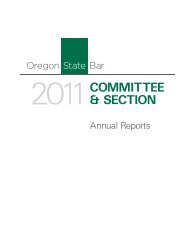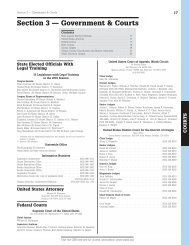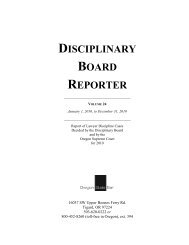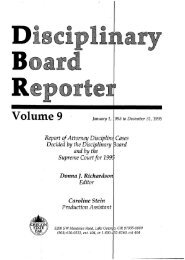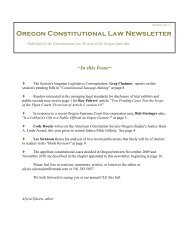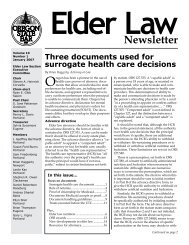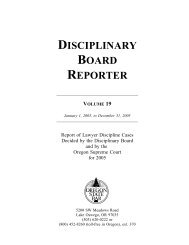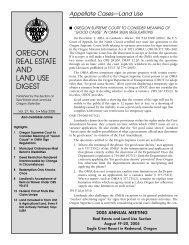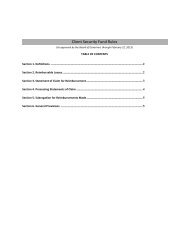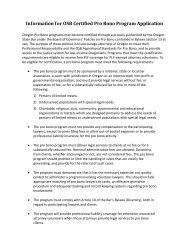February 22, 2013 - Oregon State Bar
February 22, 2013 - Oregon State Bar
February 22, 2013 - Oregon State Bar
Create successful ePaper yourself
Turn your PDF publications into a flip-book with our unique Google optimized e-Paper software.
Board of Governors Agenda — Proposed Amendment to <strong>Oregon</strong> RPC 1.10(c)<br />
<strong>February</strong> <strong>22</strong>, <strong>2013</strong> Page 2<br />
The difficulty with the language in current RPC 1.10(c) is its assumption that the<br />
personally disqualified lawyer’s former law firm continues to represent the former client. In<br />
other words, that the lawyer represented a client while at Firm 1, then moved to Firm 2 which<br />
is representing the client’s adversary in the same matter. The rule does not impute the lawyer’s<br />
disqualification to everyone in Firm 2 so long as the lawyer is properly screened. Screening is<br />
accomplished by serving affidavits on the former firm assuring that adequate measures are in<br />
place to avoid the transfer of the client’s confidential information from the lawyer to the<br />
members of Firm 2.<br />
That screening mechanism doesn’t address the situation where Client A terminates the<br />
representation of Firm 1 and is represented by Firm 3. The requirement in the rule that lawyer<br />
and Firm 2 provided affidavits to lawyer’s “former firm” does nothing to protect the interests of<br />
the client who is no longer represented by Firm 1.<br />
The detailed process in subparagraphs (1)-(3) retained the language in former DR 5-<br />
105(I), which had been incorporated into the <strong>Oregon</strong> Code in 1983. For many years, <strong>Oregon</strong><br />
was only one of two jurisdictions that permitted screening of a personally disqualified lawyer to<br />
avoid “contaminating” the entire new firm. In the nearly 30 years of the rule, there have been<br />
no reports that the rule hasn’t served its intended purpose of preventing the screened lawyer<br />
from inappropriately sharing information about the former client to other members of the firm.<br />
When <strong>Oregon</strong> migrated to the ABA Model Rules format in 2005, the drafting committee<br />
made a conscious choice to retain the long-standing screening process in part because there<br />
was no analogous ABA Model Rule. 1 At the same time, the drafting committee incorporated the<br />
definition of “screened” as <strong>Oregon</strong> RPC 1.0(n): 2<br />
“Screened” denotes the isolation of a lawyer from any participation in a matter through<br />
the timely imposition of procedures within a firm that are reasonably adequate under<br />
the circumstances to protect information that the isolated lawyer is obligated to protect<br />
under these Rules or other law.<br />
The ABA Model Rule and Other Screening Rule<br />
The ABA came late to the idea of screening took a fairly complicated approach. It<br />
requires timely notice to “any affected former client to enable the former client to ascertain<br />
compliance with the provisions of this rule.” The notice must also include<br />
• “a description of the screening procedures employed;<br />
1 The ABA adopted a screening rule in 2009 after lengthy and vigorous debate. Since then, a majority of states have<br />
followed suit. As discussed herein, however, no state has adopted a rule identical to the ABA Model Rule.<br />
2 This was done to accommodate the permission in RPC 1.18 for a law firm to oppose a prospective client so long<br />
as the lawyer consulted by the prospective client is “screened” from the new matter. That rule does not contain<br />
any additional requirements.



